When traveling abroad, we prepare our little lists of words we’ll need to know – “please,” “thank you,” “where is…,” etc. It’s great to learn a bit of any local language when you travel, but the more places you visit, the more you realize that there are some problems the guidebooks don’t have answers for.
Milk is one of these. Whether you’ve been surprised by sheep’s milk butter in Greece or confused by another country’s color indicators for fat percentage, dairy products can be confusing if you’re not prepared.
Today we’ll take you through milk in Japan, from its history and production to how to find the correct milk label in a Japanese supermarket. We’ll also cover dairy alternatives in Japan further down the page.
Let’s get into it.
History of Dairy Milk in Japan
Dairy products have been produced and consumed in Japan since around the 7th Century CE. However, drinking milk as a beverage didn’t gain much traction until around the 15th Century, when dairy farming became more popular among the noble classes.
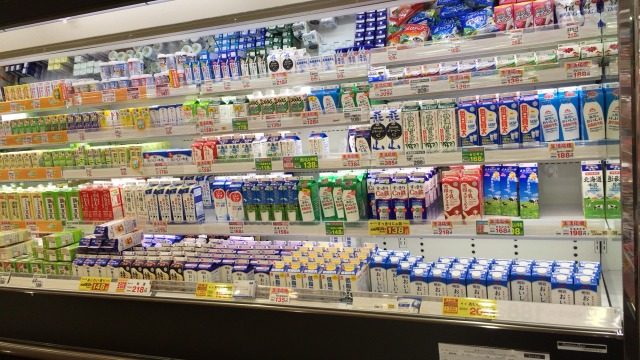
It steadily grew in popularity through the 18th and 19th Centuries, flourishing during the Meiji era towards the end of the 19th Century and the start of the 20th.
Powdered milk was one of the primary items distributed by UNICEF as aid after the war and became a staple of school lunches. This established milk as a recognized source of nutrition and familiarized an entire generation of schoolchildren with the product.
The drink didn’t become a dietary staple in Japan as in some Western countries until after WW2 when the 1954 School Lunch Program was created.
Is Milk Popular in Japan?
Fresh milk in Japan became popular over the coming decades as the Japanese dairy farming sector grew and families had more disposable income.
Today millions of Japanese regularly drink milk. It’s often sold in much smaller cartons than the large containers found in Western supermarkets.
For this reason, it’s frequently bought as a “personal” drink like a bottle of pop or orange juice for sharing with a family and pouring into hot beverages.
The popularity of milk in Japan seems surprising, given that around 20% of the country’s population is severely lactose intolerant.
However, its health benefits are strongly associated with post-war recovery, and it’s worth noting that dairy products are trendy across the Western world despite lactase persistence – which includes the ability to digest milk properly-being, being relatively uncommon after a certain age.
Where Does Milk in Japan Come From?
Most milk in Japan is produced in Hokkaido. Hokkaido is the northernmost of the four major islands of Japan, and its climate is well-suited to dairy farming, especially in the temperate summer months.
This is especially true in the flatter parts of the island, as cows often struggle in more mountainous regions – this also explains why some rugged parts of Honshū, the largest island by landmass, are inappropriate for dairy farming.
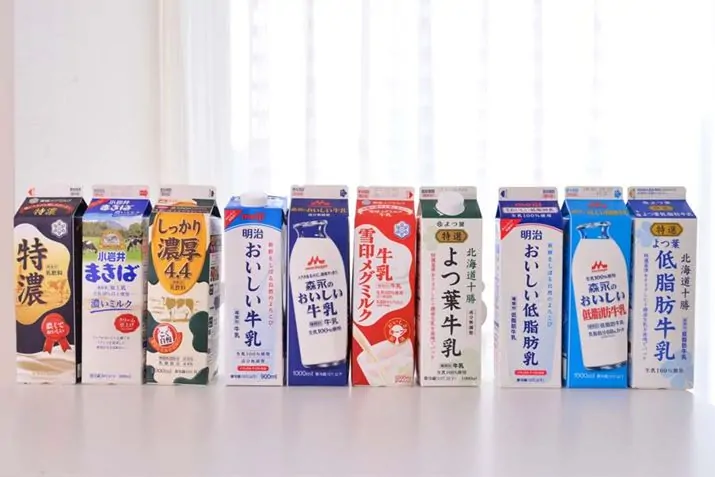
However, the northern region of Tōhoku (part of Honshū) enjoys a similar climate to Hokkaido and produces a substantial volume of dairy products.
In the south, Kyūshū also has a significant dairy farming industry, and it’s more common to find dairy products and milk from local farmers in this area rather than the major brands you’ll find in big cities.
How is Milk Labeled in Japan?
We’ve all been stung by accidentally purchasing the wrong product from a foreign shop because we didn’t check the label properly or didn’t know how. Heck, we’ve been stung by doing that at our local store.
Therefore, before traveling to Japan, it’s essential to know what signifies that you’re about to purchase regular drinking milk!
You can do this by:
- Reading the Japanese text because you can
- Searching for the Latinized version on Google
- Asking the storekeeper
- Keep this guide around so you know just what you’re looking for!
If you’ve been studying your hiragana and katakana in preparation for a visit to Japan and chose option #1, you may still not want to skip this next section.
There’s a common pitfall visitors experience when they try to buy milk in Japan – read on and find out!
牛乳 (Gyūnyū) – this is milk!
Congratulations! You have found the milk. The two kanji (Chinese characters used in most Japanese writing) above mean “cow’s milk.” This is the product you’re looking for if you want to pour it on your cereal, put it in your coffee, or just take a swig because milk is delicious and healthy and not just for kids! Proceed to the checkout with confidence.
Note that gyūnyū is typically 3.6% fat. This is the same as “whole milk” in the U.S. and the U.K. There are varieties available under different names with a lower fat content (see below).
ミルク (Miruku) – contains milk
The characters above are katakana; the Japanese characters are typically used to spell out Western loan words phonetically. They’re also among the first characters you learn when studying Japanese, which is why you must be careful if you’re testing your reading skills in a supermarket! This is visitors’ most frequent mistake when trying to buy milk in Japan.
“Mi-ru-ku” is a Japanese pronunciation of “milk,” so you might think you’ve found regular cow’s milk if you see these characters on a carton. However, you’re looking at a product containing milk, which could be anything from a low-fat version to a milkshake to a dairy product like yogurt or cheese.
Unless you can also see “牛乳” or “gyūnyū” written on the carton, you probably need to keep looking – unless you’re after an especially low- or high-fat variant.
低脂肪牛乳 (Tei-shibō gyūnyū) – low-fat milk
This indicates that the product contains less fat than on average. This will have between 0.5% and 1.5% fat – this will be listed on the carton, so check and select a product according to your taste.
無脂肪牛乳 (Mu-shibō gyūnyū) – (almost) no-fat milk
This is the product often referred to as “no-fat” in Japan and the West, although in both cases, fat is still present. It’s typically below 0.5% fat.
特濃 (Tokunō) and 濃厚 (Nōkō) – extra-thick milk
These products have added extra dairy fat; they’re extra-creamy, or somewhat like half-and-half in the U.S. There’s no substantial difference between the two products – try both and see which you prefer! Some people report that they taste different; others use them interchangeably.
乳飲料 (Nyū-inryō) – milk-based drink
You’ll probably be able to get a rough idea from the images on the package. This milk drink might be fortified with extra vitamins like iron that haven’t come from a dairy-based source. Alternatively, it might indicate a flavored drink, e.g., banana, coffee, or chocolate.
加工乳 (Kakō-nyū) – processed milk
This one can be slightly tricky, as it suggests that other dairy products have been used to alter the fat content – it might be displayed alongside a high- or low-fat indicator. Generally, this label indicates that you want to avoid the product if you’re looking for good old straightforward gyūnyū.
生乳 (Seinyū) – raw/unpasteurized milk
Raw or unpasteurized milk products are illegal in Japan – with one exception. Omoiyari Seinyū is a high-end product from Omoiyari Farm in Hokkaido and is 100% raw milk. This is the only unpasteurized variant you can buy in the country and is very pricey. It’s available in some boutique stores, although you’ll struggle to find it outside Tokyo.
乳製品 (Nyū-seihin) – dairy product
This indicates that the product contains dairy. It includes yogurts, cheese, and of course, milk.
Tip: Also, look out for 賞味期限 (Shōmi kigen) – expiry date!
One thing you shouldn’t forget while trying to find suitable milk in Japan is another critical label: the expiry date. This is usually easy to find, but the above text indicates that the product shouldn’t be consumed after that date (as opposed to “display until” labels, which are used in some places and are for store staff).
Supermarkets in Japan are generally very well-maintained, so there’s little chance you’ll find a dairy product past its sell-by-date. All the same, it’s good to know!
Does Japanese Milk Taste Different?
It depends on what type you’re drinking! Some people say they can taste a significant difference between brands, while others say there’s no difference.
Different regions always have slightly different tastes, but we can confirm that milk in Japan is instantly identifiable as the same product you enjoy back home.
Milk in Japan is quite creamy compared to other countries, but this is just because full-fat is the norm whereas, in some other countries, half-fat is the most popular.
Dairy Alternatives in Japan
If you’re looking for non-dairy alternatives in Japan, the good news is that wherever you go, there’s at least one option. The less good news is that there’s frequently only one option – soy. Here’s how to find it in a supermarket.
豆乳 (Tounyu) – soy milk
While soya beans have been a staple of Japanese cuisine for over a thousand years, soy milk is a relatively recent addition to the market. It’s widely available in Japanese supermarkets and as a dairy alternative in cafés, especially in larger population centers.
There is the risk that emulsifiers or flavorings in soy milk could contain animal derivatives. It isn’t easy to double-check the list of ingredients and additives on products in a foreign language. To be on the safe side, you can look for 無調整豆乳 (mu chōsei tōnyū), which translates as “unadjusted soy milk” and contains no additives at all.
Other Milk Alternatives in Japan
It’s becoming more common to see products like oat and coconut milk appear in Japanese shops. You may recognize these, as they’re typically imported from Western brands.
While rice is a culinary staple of Japan and rice milk has recently seen steady growth in the West, you won’t find this product in Japan! Confused locals might think you’re asking for amazake (甘酒), a delicious non-alcoholic fermented rice drink but very different from what you’re looking for.
To sum up, soy tends to be the most reliable milk alternative in Japan. Asking the shopkeeper for “mu chōsei tōnyū” is a safe way to ensure that it’s 100% free of animal products or derivatives.
Milk in Japan – Final Thoughts
No traveler should ever be subjected to the indignity of getting home and finding that they’ve accidentally purchased the wrong product.
If you’re planning a trip to Japan, keep this guide handy to identify Japanese characters on dairy products and ensure you’re not buying a banana milkshake to top up your coffee.
If in doubt, you can also show the Japanese text to the shopkeeper, who will be glad to help!

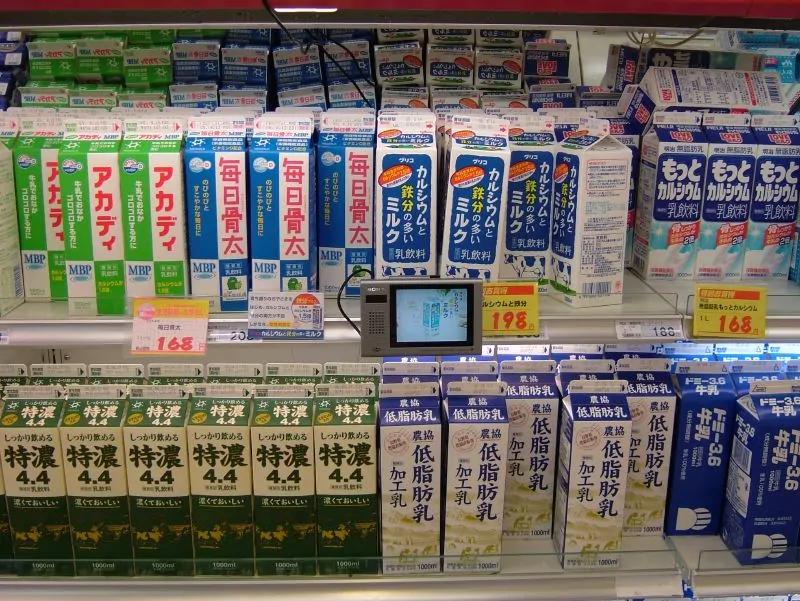
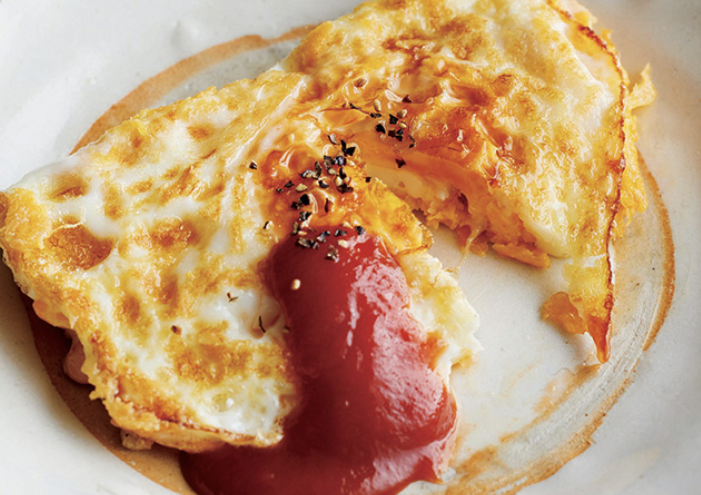
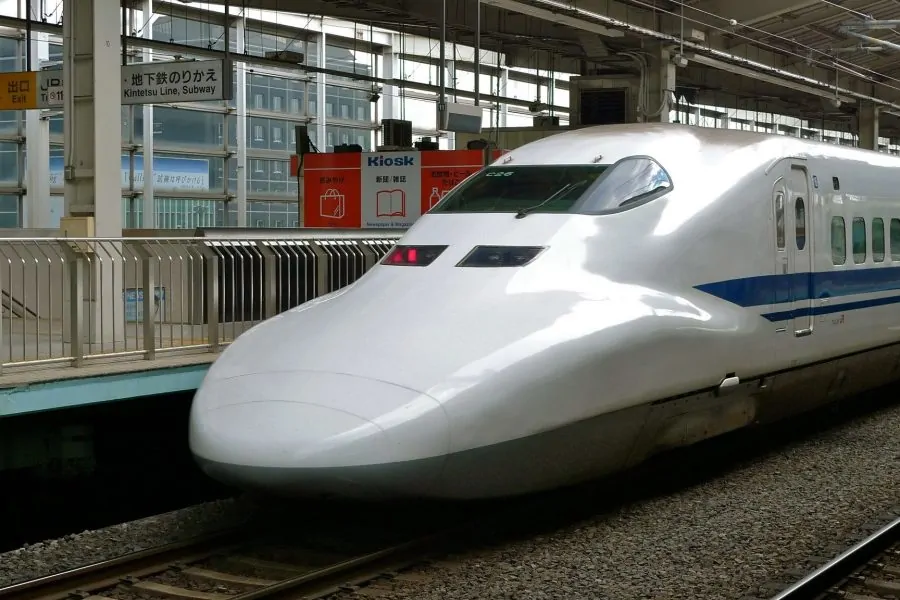

Leave a Comment